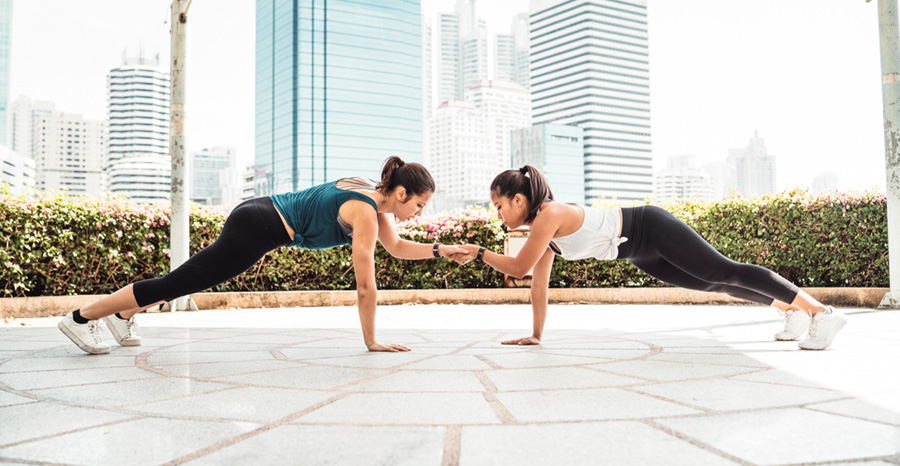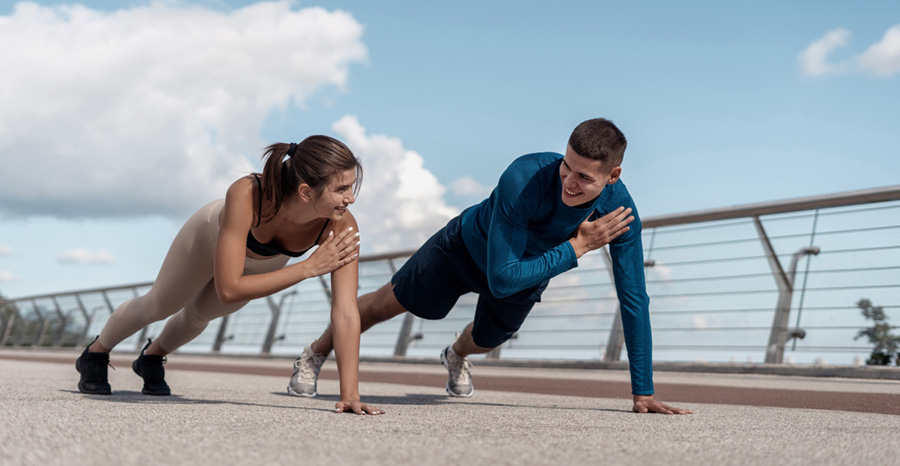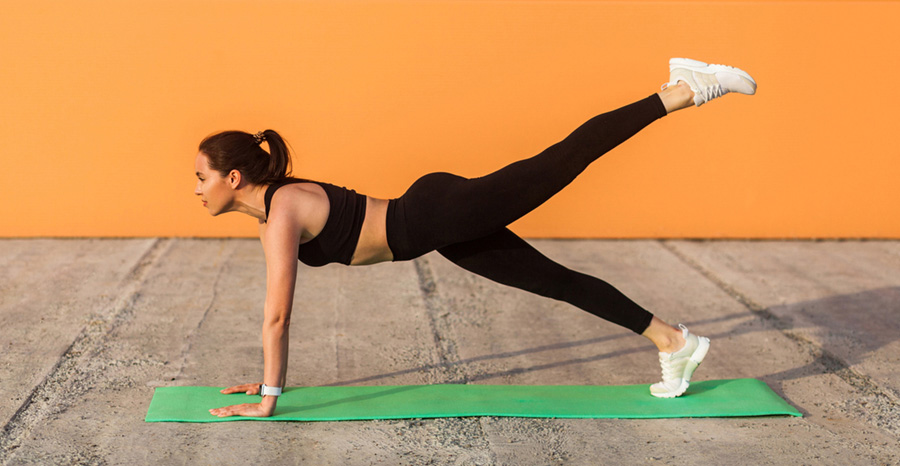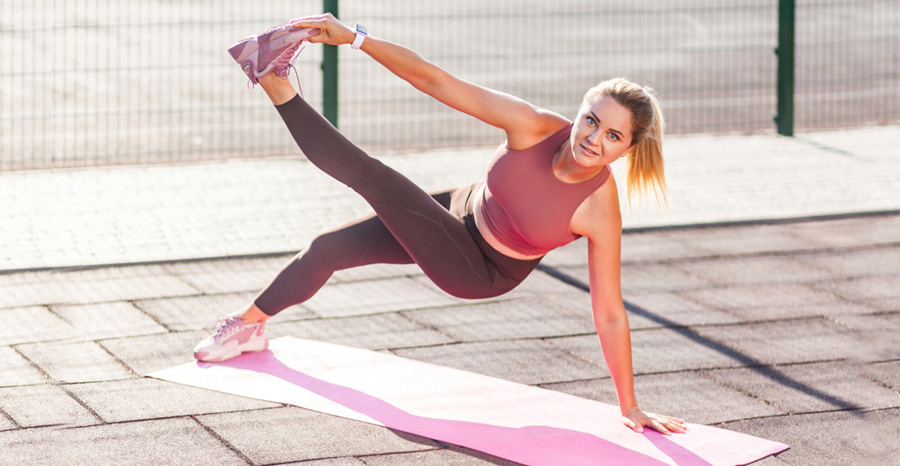
- Home
- News & Blog
- Scale Your Core Workout with These 4 Plank Variations

If you want to work on your core, planks are great options because they’re effective and when done right, they hit other body parts too, not only your core—like your back, your shoulders, your chest, and even your glutes
When core workouts come to mind, many people think of only the front part of the abdomen only which turns into the much-desired six pack. But your core muscles actually include other muscles such as the transversus abdominis, which are muscles that wrap around the spine area and pelvis, supporting the lower back, the rectus abdominis, which are muscles at the front that support the spine and keep your organs in place, and the obliques, which provide support for rotational movements and other kinds of range of motion. When you do planks, you activate all these muscles. This is why planks are very useful and effective. So if you want to work on strengthening your core, incorporating planks into your exercise routine will help a lot!
But why is it important to strengthen your core? If you have a strong core, you will have an easier time doing all kinds of activities. For example, it’s easier to pick up something from the floor and reach out for something at the top shelf with a strong core. For mothers who have young children or toddlers, a strong core will lessen back pain caused by carrying kids. Your core connects and supports your upper body and lower body, so it’s part and parcel of every movement you make.
If your body is well supported with a strong core, you can prevent injuries because a strong core will improve your balance and stability. Think of it this way, you won’t easily get thrown off balance by uneven ground and you will find it easier to move without wobbling here and there.
Core muscles help maintain good posture, too. When you develop your core muscles you improve the way you carry your body. If you’ve been slouching, strengthening your core will help you straighten your body, which is also less stressful on our back in the long run. Overall, having a strong core will help you go about your daily life with more comfort, efficiency, and safety for injury.
If you’re a beginner, you can start with just trying to hold a high plank for at least 30 seconds. Try to keep your body as straight as possible by pushing your shoulders down, spreading your shoulder blades apart, tucking in your belly and finally, activated your butt. Then once you get stronger, you will find yourself holding a plank for up to one minute or more! After you reach this point, what else can you do to challenge yourself a little more?
There are several ways to make your planks more challenging. As a start, you can add simple movements first, then move on to more advanced options. To help you out, here are easy variations that you can try if you want to scale your plank workouts.
(1) Planks with Front Arm Raises

From a high plank position, raise your right arm up in front of you and hold it for three seconds. Put your right arm down back and repeat the same movement with your left arm.
(2) Planks with Shoulder Taps

Get into a high plank position. Tap your left shoulder with your right arm then place your right arm back on the floor. Repeat the movement with your left arm.
(3) Planks with Leg Raises

Once again, start in a high plank position. Lift your right leg up—about 3 inches away from the floor. Hold the position for one second then place it back down. Repeat this movement with your left leg.
(4) Planks with Side-to-Side Toe Touches

From a high plank position, move your right leg to the side and gently tap the floor then place your foot back to where it was. Repeat this movement with your left foot.
Do each movement 10 times.
When you try these moves out, make sure to keep your belly in and your midsection tight at all times. Avoid swaying from side to side when transferring your weight. Instead, keep your body as steady as possible and try to perform each movement with control—don’t rush! Don’t forget to breathe, too. Keep a steady breath through each movement, inhaling when you’re in the plank position, and exhaling when you exert effort on the variations.
Try these four new plank variations now. Hopefully this article inspires you to continue staying fit and #quarantoned at home.
For any Physical therapy & rehabilitation Services call our Clinic contact number or email via customer.care@keralty.com.ph or drop by any of our clinics today.
- Keralty Festival - Monday to Sunday 7:00AM - 6:00PM (0908-698-8286)
- Keralty San Lazaro (TopHealth) - Monday to Sunday 9:00AM - 7:00PM (0953-377-1587)
- Keralty Megamall (MegaClinic) -Monday to Sunday 8:00AM - 6:00PM (0917-399-8972)
 Philippines
Philippines
 Keralty Global
Keralty Global

